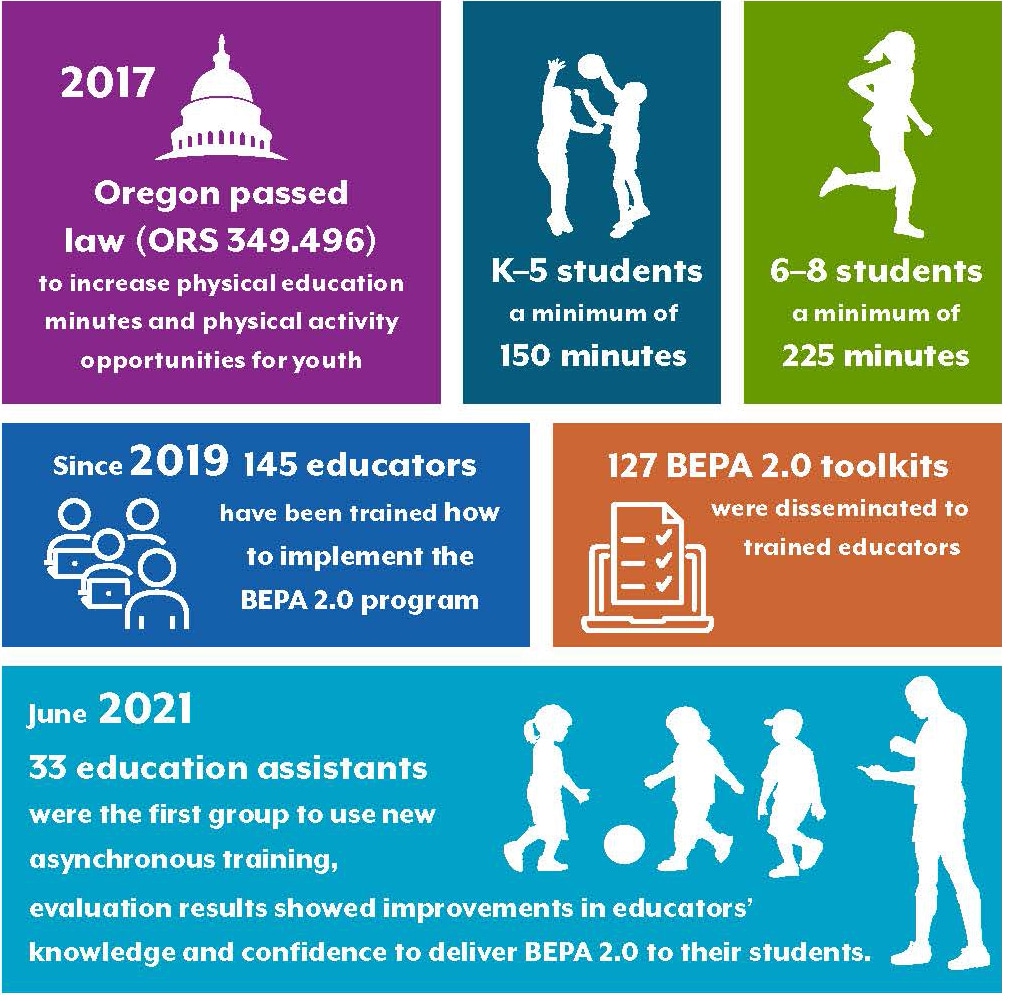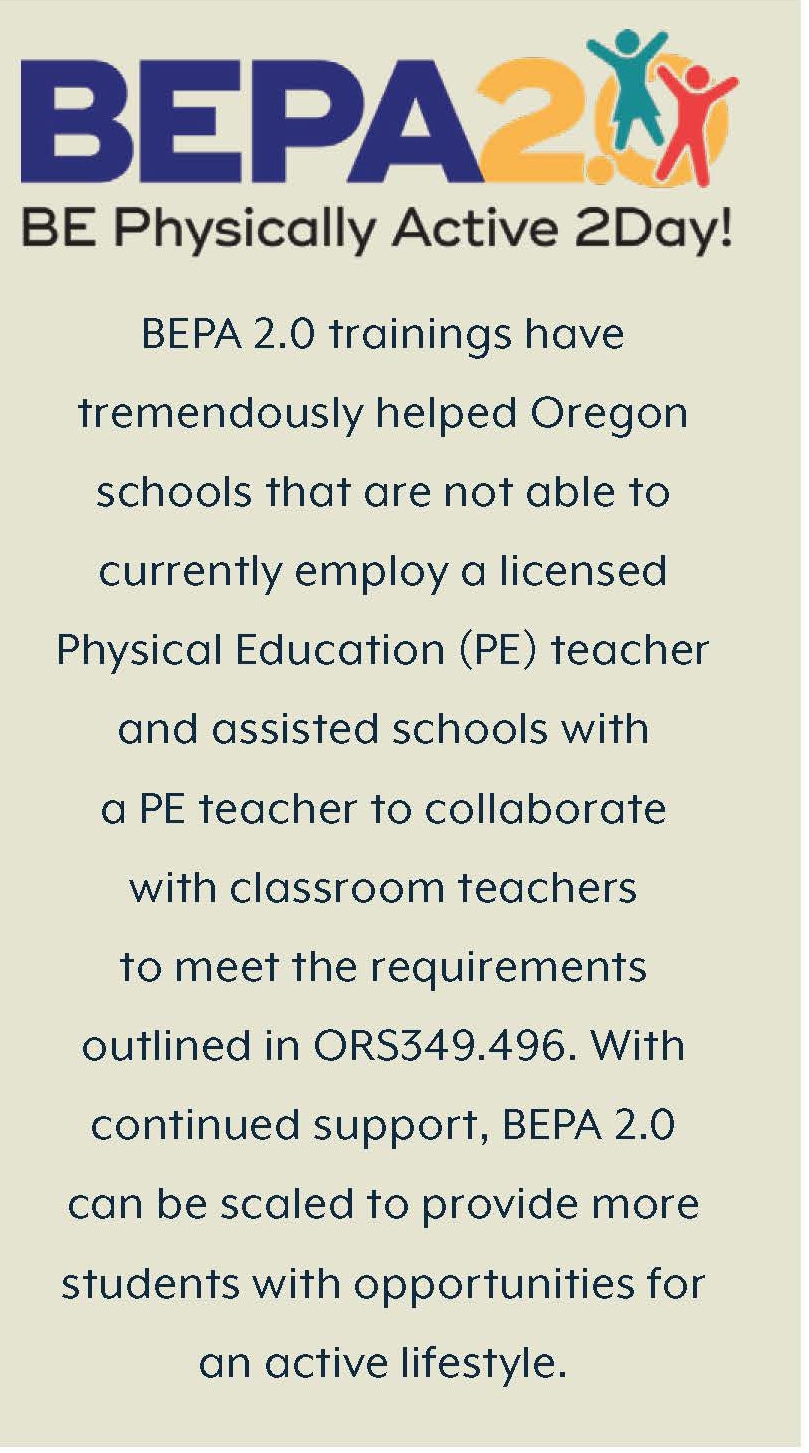Oregon

In 2017, the Oregon legislature took steps to increase physical education minutes and physical activity opportunities for young people by passing a law (ORS 349.496) that requires K–5 students to receive at least 150 minutes of physical education per week for the school year and students in grades 6–8 to receive 225 minutes. As a result, Oregon State University (OSU) worked with the Oregon Department of Education (ODE) to align BE Physically Active 2Day external icon(BEPA 2.0), OSU’s classroom-based physical activity program, with state and national health and physical education standards.
In Oregon, Multiple-Subject Endorsed Elementary Educators can teach physical education in their own classes as long as the content aligns with the state’s PE standards and grade- level expectations. The BEPA 2.0 curriculum makes it easier for them to provide physical activity opportunities at school. BEPA 2.0 administrators provided teachers a 3-hour training to increase their knowledge and self-efficacy to deliver the BEPA 2.0 program in their classrooms and break down any perceived barriers to activity implementation. Since 2019, over 145 educators (teachers, administrators, education assistants) have been trained across six priority school districts in Oregon on how to implement the BEPA 2.0 program in their elementary schools. In addition, 127 BEPA 2.0 toolkits were disseminated to trained educators across the state, giving them the resources needed to provide physical activity opportunities for students.

During the COVID-19 pandemic, training moved to an online format that could be delivered as needed. In addition, a unique funding opportunity from Oregon Healthy Schools enabled trained teachers to receive BEPA 2.0 toolkits for their classrooms, which included over 50 activities aligned with standards and all the necessary play items. The challenges of delivering much-needed physical education content in the face of a global pandemic created opportunities to expand the reach of BEPA 2.0 trainings.
While in-person trainings may remain the preferred approach, the online training model has increased the capacity to implement more BEPA 2.0 school trainings and provides a mechanism to easily train new educators in schools where other staff have already been trained. In June 2021, 33 education assistants from the Multnomah Education Service District were the first group to use the new training, and evaluation results showed measurable improvements in educators’ knowledge and confidence to deliver BEPA 2.0 to their students. To make BEPA 2.0 useful for students with behavioral or developmental issues, trainings are followed by a discussion about inclusion.
During the 2021–2022 school year, thanks to Oregon Healthy Schools funds, over 100 additional BEPA 2.0 toolkits will be distributed to priority districts throughout Oregon, providing more students with opportunities to be physically active and learn the importance of physical activity for health—skills and knowledge that will last a lifetime. Also, three more trainings were scheduled for the 2021–2022 school year to orient educators to the BEPA 2.0 toolkit and how to implement classroom activity breaks.

